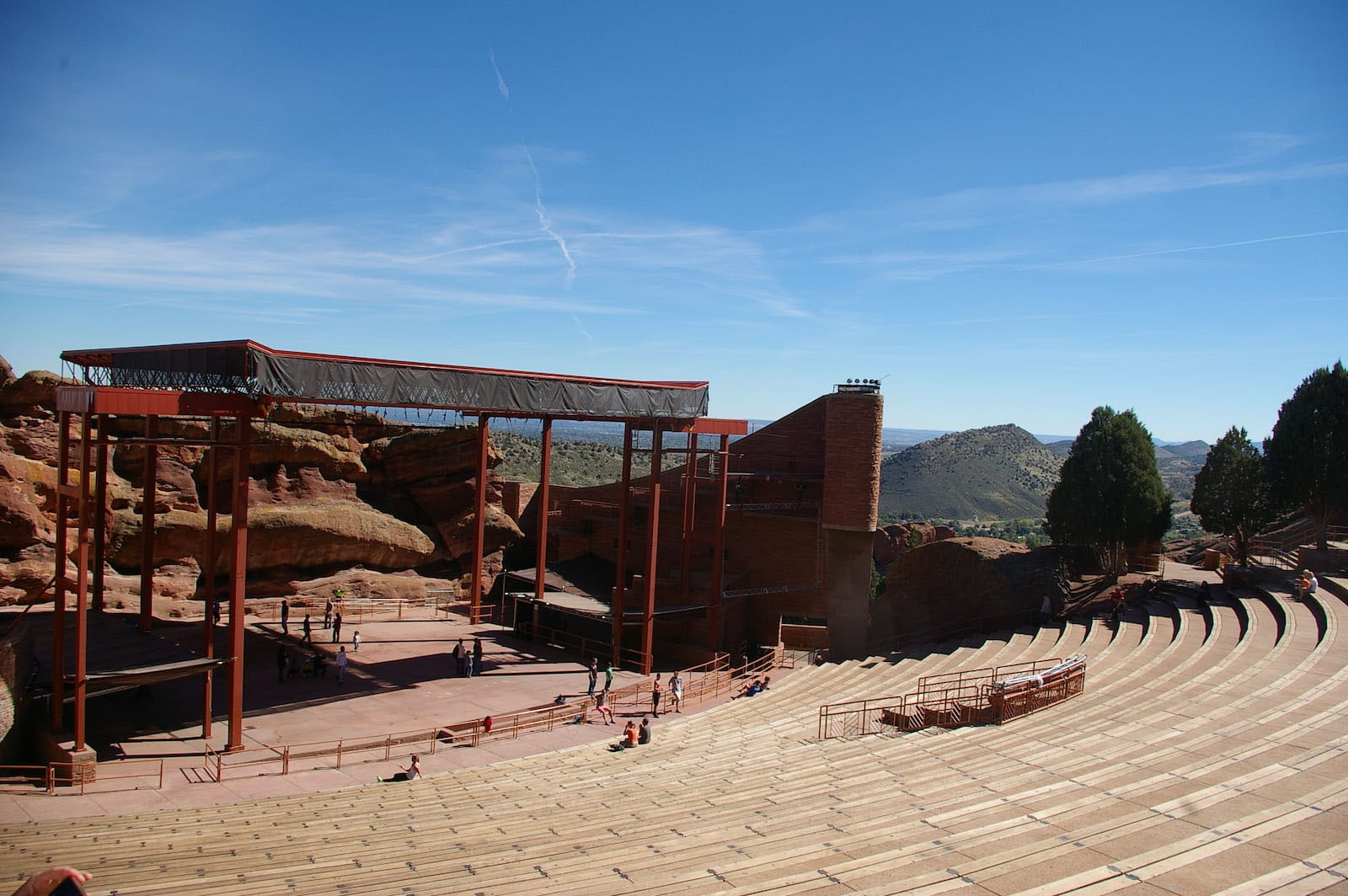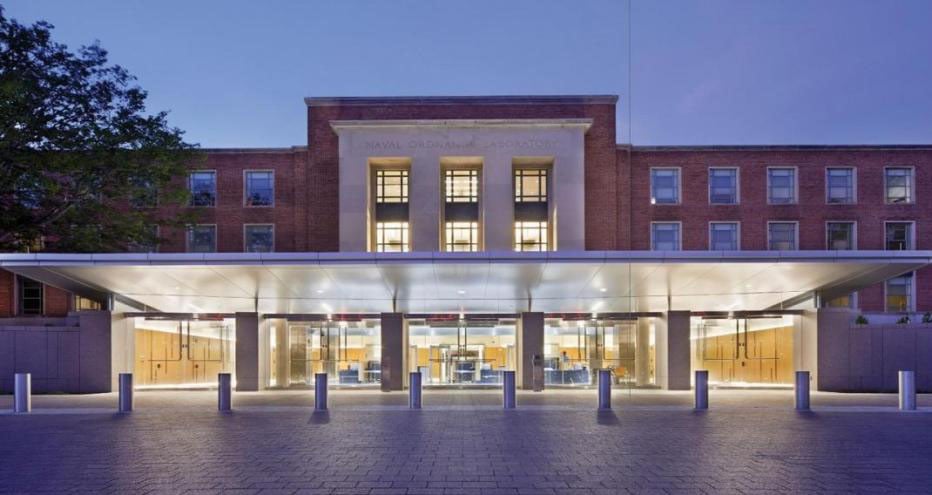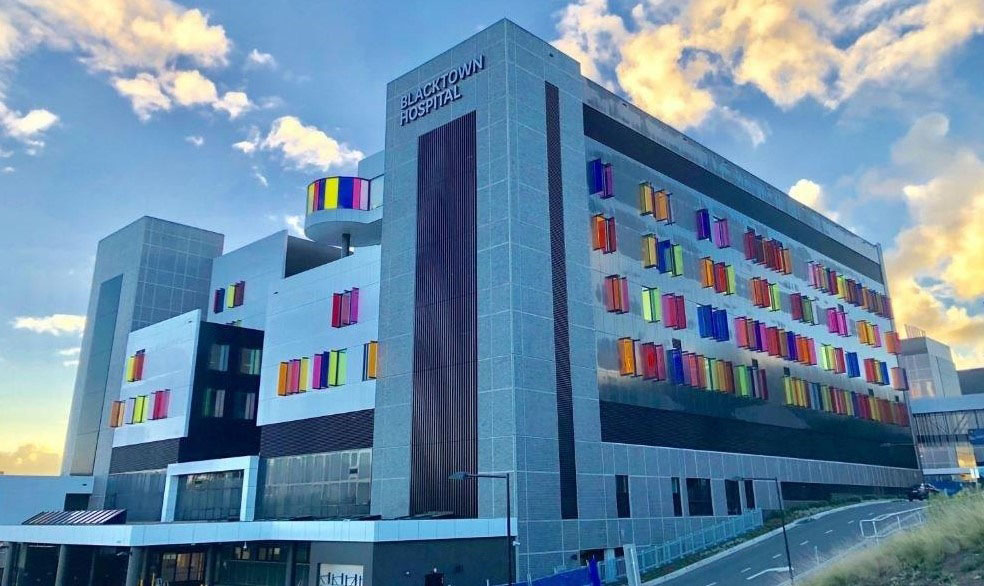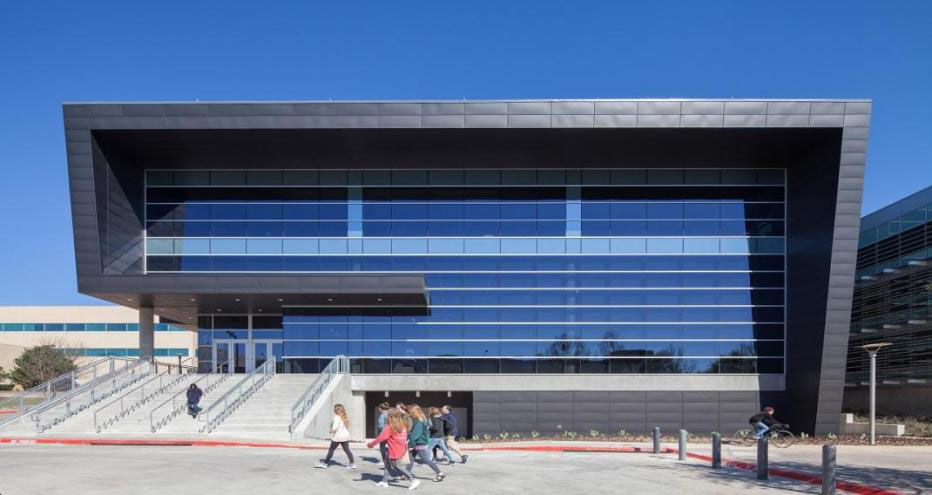Jacobs Architecture is a globally recognized architectural practice known for its innovative design solutions and integrated approach to architecture. With over 1,000 partners, the firm has over 70 years of experience providing architectural solutions across various sectors. It is ranked highly in industry publications and has designed millions of square feet of space. The firm’s integrated design approach covers all aspects of green building delivery, from planning and design to construction and operations. Jacobs Architecture collaborates extensively across disciplines to ensure architecture aligns with engineering, construction, and sustainability principles. Notable projects include the Red Rocks Park and Amphitheatre visitor center and the Mark Wainwright Analytical Centre, known for its advanced microscopes. The history of Jacobs Architecture is influenced by urbanist and activist Jane Jacobs, who championed human-centric urban planning. Jacobs’ approach focused on preserving existing communities and valuing street life, contrasting with modernist principles. Her influence transformed urban design by prioritizing human experiences. Jacobs Architecture has a global presence, with offices in hundreds of locations across six continents. In the United States, it has major regional hubs in several cities, while internationally, it has notable offices in the UK, India, Canada, Singapore, the Philippines, and South Korea. The firm specializes in various sectors: commercial, education, healthcare, government, science and technology, and transportation. Jacobs Architecture was founded by Joseph J. Jacobs in 1947 as a consulting engineering business. Jacobs Architecture is now part of the global engineering and construction firm Jacobs Engineering Group. The company’s headquarters is located in Dallas, Texas. Bob Pragada serves as the current CEO of Jacobs Architecture, taking over in 2023. He has been with the company for several years and aims to continue the firm’s growth and diversification. The mission of Jacobs Architecture is to deliver innovative and sustainable architectural solutions that align with client’s goals and positively impact communities. Some famous projects Jacobs Architecture has undertaken include the Changchun Finance and Sci-Tech Park in China, the Blacktown Mount Druitt Hospital in Sydney, and the Red Rocks Park and Amphitheatre Visitor Center in Colorado. Jacobs Architecture’s important clients include NASA, the U.S. Department of Defense, various healthcare institutions, aviation and transportation clients, tech and pharmaceutical companies, educational institutions, commercial developers, water utilities, oil, gas, and chemical clients, and government and public agencies. The global headquarters of Jacobs Architecture is located at 1999 Bryan Street, Suite 3500, Dallas, TX 75201, USA. The contact phone number for Jacobs Architecture is +1.214.638.0145. Those interested in working for Jacobs Architecture can visit the Jacobs careers website, search for relevant job openings, and follow the application process outlined.
What is Jacobs Architecture?
Jacobs Architecture is a leading global practice recognized for innovative design solutions across different geographies and markets. It has over 1,000 partners focused on creating fully integrated solutions that meet clients’ immediate and long-term needs. Jacobs Architecture has over 70 years of experience providing architectural solutions to clients globally. It is ranked #1 in the ENR Top 500 Design Firms and #6 in the Architectural Record’s Top 300 Architecture Firms in 2021.
The company takes an integrated design approach that covers all phases of green building delivery, including planning, design, construction, and operations/maintenance. It collaborates extensively across disciplines to ensure complete integration of architecture with engineering, construction, and sustainability. Some signature projects for Jacobs Architecture include the Red Rocks Park and Amphitheatre visitor center, the first new construction at that historic landmark site since 1941. It has also designed leading healthcare and research facilities like the Mark Wainwright Analytical Centre at the University of New South Wales, which houses some of the most powerful microscopes in the world for scientific discovery.

The firm emphasizes a passion for design excellence fully integrated across stakeholders, communities, and the environment. Its professionals represent diverse cultural and professional backgrounds unified by this drive for innovation and contextual design sensitivity. The company culture promotes collaboration and a shared commitment to client service. Jacobs Architecture solutions span specialized market sectors like healthcare, education, commercial, civic, and transportation, among others, and are tailored to local contexts. It aims for its architecture to act as a sustainable “living infrastructure” that positively impacts communities over a long lifespan.
What is the history of Jacobs Architecture?
Jane Jacobs was an influential urbanist and activist who pioneered new approaches to urban planning in the 1950s-60s. Her seminal 1961 book The Death and Life of Great American Cities argued that cities should be seen as organic, evolving systems rather than products of top-down design. Jacobs was inspired by observing her Greenwich Village neighborhood, valuing old buildings and street life over imposing projects.
Jacobs saw the role of architecture as enabling city life rather than dominating it. She criticized modernist planning principles of functional separation and large-scale renewal, advocating for mixed-use neighborhoods, short blocks, and diverse building ages and types. Her people-centric philosophy made architects think more holistically about cities, transforming urban design by prioritizing human experiences over abstract concepts of order.
Jacobs valued historic urban fabric; she was not necessarily anti-modern architecture if it supported street life and context. It emphasized relating buildings to their surroundings rather than mandating a style. Jacobs fought major renewal plans by Robert Moses and others that would have demolished neighborhoods for highways and towers. Her concepts still influence planning today as cities aim to be more walkable and inviting. Other influential 20th-century architects like Le Corbusier had very different principles focused on rationalism, functionalism, and machine-age aesthetics rather than traditional development patterns. Jacobs represented a paradigm shift in valuing existing communities over utopian visions requiring tabula rasa clearance. She empowered ordinary citizens to shape their environments, leaving a legacy that redefined urbanism and architecture’s role.
Though initially a marginalized amateur, Jacobs’ outside perspective fundamentally changed how we understand cities. Her observations continue to inform planning and design, seeking to build lively, human-scale, fine-grained urban places. Jacobs championed the wisdom of locals over experts, helping preserve urban history and identity against modernist orthodoxy. Her love of neighborhoods and appreciation for the spontaneity of street life remain influential today.
Where is Jacobs Architecture located?
Jacobs Architecture has offices and operations in hundreds of locations worldwide across six continents. Jacobs Architecture has major regional hubs and offices in most major cities in the United States. Some of their most prominent US offices are in Houston, New York, Los Angeles, Chicago, Dallas, and Washington D.C.. Jacobs has a strong nationwide presence aligned with the different industries and clients they serve in each region.
Jacobs Architecture has a notable international presence across Europe, Asia, Australia, and the Middle East. Some major global offices are in the UK, India, Canada, Singapore, the Philippines, and South Korea. Their overseas locations allow them to provide localized services and embed staff within their clients’ regions.
Jacobs was founded in California in 1947, the company is now headquartered in Dallas, Texas, after relocating there in 2016. The Dallas headquarters consolidates Jacobs’ global leadership and core functions in one central location. However, Jacobs maintains a distributed network of hundreds of offices globally as a multinational firm to serve different markets and provide integrated architectural, engineering, and construction services worldwide.
What does Jacobs Architecture focus on building?
Jacobs Architecture provides integrated architectural design, planning, and delivery services worldwide for various building sectors and markets. Jacobs focuses on designing high-performance buildings such as corporate offices, mixed-use developments, aviation facilities, and retail spaces in the commercial sector. They emphasize sustainability, flexibility, and human-centric design. For the education market, Jacobs has extensive expertise in designing K-12 schools, colleges, universities, and advanced research facilities. They create innovative learning environments tailored to new pedagogies and technologies. Jacobs specializes in designing patient-focused hospitals, clinics, labs, and elder care facilities in the healthcare sector. They incorporate evidence-based design for optimal health outcomes.

Jacobs has designed numerous government office buildings, courthouses, embassies, museums, and other public facilities for government and civic clients. They focus on creating a cost-efficient, secure, and community-oriented civic architecture. Jacobs designs state-of-the-art research laboratories, innovation centers, and high-tech industrial spaces in the science and technology sector. They integrate specialized engineering and planning for complex technical facilities. Across industries, Jacobs employs collaborative, integrated design processes and extensive use of virtual modeling. They aim to create architecture that seamlessly combines aesthetics, functionality, sustainability, and cost-effectiveness tailored to each client’s needs and identity.
Who is the owner of Jacobs Architecture?
Joseph J. Jacobs founded Jacobs Architecture as a one-person consulting engineering business based in Pasadena, California. Jacobs was an American chemical engineer who had previously worked at companies like Merck, developing mass-production techniques for penicillin and DDT. In 1947, Jacobs struck out on his own and established the engineering services firm bearing his name. Through internal growth and acquisitions over the decades, Jacobs’ company became the global Fortune 500 engineering and construction firm Jacobs Engineering Group known today.
Although Joseph Jacobs stepped down from leading the company in 1992 and passed away in 2004, the company he founded over 75 years ago lives on as Jacobs Engineering. It is now one of the largest multidisciplinary engineering companies in the world, with more than 80,000 workers globally. So, while Jacobs Architecture has expanded, diversified, and evolved since 1947, it owes its origins to the engineering consultancy established by Joseph J. Jacobs in the post-World War II years. He founded the company that became the Jacobs of today.
Who is the CEO of Jacobs Architecture?
Jacobs Architecture’s current CEO is Bob Pragada, who took over the role in January 2023 after serving as President and COO since 2019. Pragada succeeded Steve Demetriou, who was Jacobs’ CEO from 2015-2022 and now serves as Executive Chair of the Jacobs board. Pragada joined Jacobs in 2006 and held senior leadership positions over nine years before briefly leaving and returning in 2016. As President and COO since 2019, Pragada led Jacobs’ strategy and global operations. He was instrumental in significant acquisitions like CH2M and growth initiatives. The leadership transition was part of a planned succession. Demetriou will continue advising Pragada and Jacobs’ board to ensure continuity.
What is the mission of Jacobs Architecture?
The mission of Jacobs Architecture is to deliver innovative, sustainable architectural solutions that support their clients’ goals and make a positive impact. As part of the larger Jacobs engineering company, their architecture practice aims to integrate seamlessly with other disciplines to provide comprehensive services across the entire project lifecycle. Jacobs Architecture employs an integrated design approach that leverages input from diverse experts across engineering, construction, and planning. Their mission is to collaborate internally and with clients to co-create inspired architecture tailored to each unique context. They aim to design high-performance spaces that are functional, cost-efficient, aesthetically appealing, and environmentally responsible.
What are the most famous projects of Jacobs Architecture?

Listed below are the famous projects of Jacobs Architecture.
- Changchun Finance and Sci-Tech Park: The Changchun Finance and Sci-Tech Park is a massive 53-hectare development in Changchun, China, designed by Jacobs Architecture. Completed in 2014, it includes office towers, hotels, exhibition centers, and retail spaces. The sustainable mixed-use complex aims to attract finance and tech companies with its innovative and iconic architecture featuring sweeping curved glass forms. The ambitious master plan creates an innovation district and financial ecosystem for Changchun. Jacobs’ design focuses on open spaces, human-centric principles, and seamless integration of the project into the surrounding urban fabric. The Changchun Finance Park establishes a new architectural identity for the city through its monumental scale and fluid, futuristic aesthetic.
- Blacktown Mount Druitt Hospital: The new 7-story Blacktown Mount Druitt Hospital, the famous project Jacobs designed in Sydney, provides state-of-the-art medical facilities to serve the region’s growing population. Completed in 2019, the hospital expansion project achieved LEED Platinum certification for sustainability. Jacobs’ design maximizes natural light and ventilation while incorporating digital systems for operations and patient experiences. The hospital more than doubled its maternity, pediatric, emergency, and other acute care services capacity through a new clinical building and refurbishments.
- Red Rocks Park and Amphitheatre Visitor Center: Red Rocks Park and Amphitheatre Visitor Center is a visitor center in Colorado and one of the famous projects designed by Jacobs. The project marked the first new construction at the historic concert venue and national landmark site in years. Jacobs’ sensitive design balances accommodating park operations with preserving the natural landscape that draws over 1 million visitors annually.
- FDA Headquarters: For the U.S. Food and Drug Administration’s consolidated headquarters campus in Maryland and one of the famous projects designed by Jacobs. They developed new offices, labs, and amenities to support 8,500 FDA employees. Completed in 2004, the LEED Gold campus provides collaborative workspaces and state-of-the-art facilities for the agency’s mission. Jacobs integrated complex engineering systems and security requirements within architecture, promoting employee wellness and sustainability.
- UT Dallas Student Services Building: UT Dallas Student Services Building is a student center designed by Jacobs to provide gathering and study spaces, offices, retail, and event facilities for the University of Texas at Dallas. Completed in 2018, the building’s vibrant design aims to foster community and improve campus connectivity. The project involved extensive student engagement to create versatile spaces addressing user needs and promoting recruitment.
- Anglian Water @one Alliance, UK: Jacobs leads the @one Alliance in delivering Anglian Water’s billion strategic pipeline program to improve resilience and meet the region’s long-term water needs. Jacobs’s architectural role includes the sustainable design of new buildings and infrastructure integrated into rural and urban environments across the east of England.
Who are the most important clients of Jacobs Architecture?

Listed below are the most important clients of Jacobs Architecture.
- NASA: NASA is a long-time partner spanning over 60 years, the most important client of Jacobs Architecture. It has provided various architecture and engineering services for NASA across multiple programs and facilities. Jacobs has worked on mission-critical projects, including designing and constructing testing complexes, launch pads, mission control centers, research labs, and office buildings. The firm has supported NASA’s exploration of space and other planets through facilities enabling rocket testing, spacecraft development, mission operations, and scientific research.
- U.S. Department of Defense: Jacobs supports the U.S. military and is one of its most important clients through architecture and engineering projects, improving bases, training facilities, labs, maintenance depots, and headquarters. Jacobs has worked on hundreds of projects for the Army, Navy, Air Force, Marines, National Guard, and other DoD agencies. The firm’s work includes master planning, airfield design, simulation facilities, command centers, maintenance hangars, barracks, educational buildings, warehouses, and offices.
- Chinese Academy of Sciences: Jacobs, one of their most significant collaborations is with the Chinese Academy of Sciences (CAS). Jacobs provided planning, programming, and design services to the Information Science Building for CAS, located east of the Olympic Park in northern Beijing. This building accommodates the Computer Network Information Center for CAS, a leading academic institution and comprehensive research and development center in China. Jacobs has expanded its partnership with Palantir Technologies to harness Palantir’s cutting-edge AI capabilities and revolutionize the commercialization of AI solutions across various industries.
- University of Texas at Austin: One of Jacobs’s most important clients is the University of Texas at Austin. Jacobs served as the prime architect and engineer for the Engineering Education and Research Center (EERC). This project was central to achieving the Cockrell School of Engineering’s vision to become a leader in engineering education, research, and entrepreneurship. It included relocating and enhancing existing service utility lines and more than 20,000 square feet of temporary building structures on-site.
What is the address of Jacobs Architecture?
The address of Jacobs Global Headquarters is 1999 Bryan Street, Suite 3500. Dallas, TX 75201. The USA. Jacobs relocated its global headquarters from Pasadena, California, to Dallas, Texas, in 2016. Before the move, Jacobs’ headquarters was located in Pasadena, CA, and has been since the company’s founding in 1947. They confirm the new Jacobs global HQ address is in Dallas as of 2016.
What is the contact phone number of Jacobs Architecture?
Jacobs Architecture’s contact phone number is +1.214.638.0145. An online contact form on the Jacobs website goes to their global headquarters. The form can be found here: https://www.jacobs.com/contact. Jacobs has office locations worldwide. To find the nearest Jacobs Architecture office, visit their office locations page: https://www.jacobs.com/locations. For media inquiries, the Jacobs media relations email is [email protected]. For investor relations questions, call +1-832-204-2727 or email [email protected].
How to apply to work for Jacobs Architecture?
Here are the steps on how to apply for Jacobs Architecture:
- Contact Information: To contact Jacobs Architecture, visit the company’s careers website at careers.jacobs.com. Once there, navigate to the “Contact Us” page to find the email or phone number to contact the company’s HR department. You can also reach out to the company through their social media handles on platforms like LinkedIn, Twitter, or Facebook.
- Finding Open Positions: To see job openings at Jacobs Architecture, visit the company’s careers website at careers.jacobs.com. Click on “Search Jobs” to browse the available job openings. Then, use the search filters on the website to find relevant job openings by location, job category, job type, and more. For instance, if you are interested in architect roles, you can look for job openings listed under categories like “Architecture & Design,” “Buildings & Infrastructure”, or “Project Management.” You should also look for job openings on other sites like LinkedIn, Glassdoor, Indeed, etc., to increase your chances of finding a suitable job opening. Additionally, explore networks and contacts to see if they know of any job openings matching your skills.
- Submitting an Application: Once you find a suitable opening, click “Apply” and complete the online application form. You should attach your updated resume, cover letter, portfolio, and other required documents. The online application form may ask for additional information like your contact details, work experience, education, and other relevant details. Filling out the application form can increase your chances of being shortlisted for the interview.
- Interview Process: If you are shortlisted, you will receive an email or phone call to schedule an interview. The interview process may involve multiple phone, video, and face-to-face interviews. During the interview, you will be asked about your skills, experience, and qualifications. You should prepare for the interview by researching the company and the role you’re applying for, practicing your responses to common interview questions, and dressing appropriately.
What style of architecture does Jacobs represent?
Jacobs’ architectural style represents a focus on sustainable, context-driven design that aims to solve clients’ needs while improving communities and the environment. Several sources highlight Jacobs’ expertise in commercial architecture, designing major corporate offices, research facilities, and other large-scale projects. Their commercial buildings often feature an open, flexible layout to support collaboration, such as the Jacobs Institute for Design Innovation, which models high-density, low-carbon spaces for project-based learning. Jacobs also has significant healthcare architecture experience designing hospitals, labs, and medical centers.
In the residential sector, Jacobs is known for modern, minimalist houses like the concrete Bare House in Tel Aviv, which opens entirely to the outdoors. This home exemplifies Jacobs’ tendency toward simple, bare materials like concrete and industrial furnishings to create a sleek, contemporary aesthetic. However, Jacobs also designed earlier homes like the Herbert and Katherine Jacobs First House by Frank Lloyd Wright, representing Jacobs’ roots in organic, prairie-style architecture.
How important is it for architecture firms to follow the architecture fundamentals?
Architecture is important for architecture firms to follow the architecture fundamentals spanning design excellence, business operations, collaborative processes, and ethical integrity. First and foremost, architecture practices must demonstrate strong design capabilities rooted in aesthetics, spatial relationships, sustainability, contextual sensitivity, and engineering principles. Mastery of these technical skills and design thinking allows firms to meet client needs and create innovative, quality buildings. Firms should stay updated on emerging technologies, materials, codes, and best practices to maintain high standards. However, the design is only one piece. Running an architecture business requires strategic planning, financial management, marketing, HR, IT, and legal expertise. Firms must operate efficiently and profitably to remain viable. Understanding business fundamentals is vital. Firms should collaborate across specialties and gather stakeholder input throughout a project.
Should all architecture companies have a portfolio?
Yes, a portfolio is an important component for any architecture firm, regardless of size or years in business. An architecture portfolio serves multiple vital purposes, making it invaluable for companies in this field. First, a portfolio showcases a firm’s design capabilities and past work to potential clients. It provides visual evidence of their experience and skills, helping clients evaluate expertise and fit for a project. For less established firms, the portfolio builds credibility through demonstrated project knowledge. More experienced firms use their portfolio to highlight signature styles and technical competencies. The portfolio is a chance to make a strong first impression. The portfolio becomes a sales tool, and the portfolio website is a 24/7 resource for prospective clients researching options. For staff, the portfolio helps recruit talent by giving candidates a window into the firm’s design aesthetic and values. It communicates the types of projects and roles available. The portfolio showcases the kind of work employees can expect to produce.


